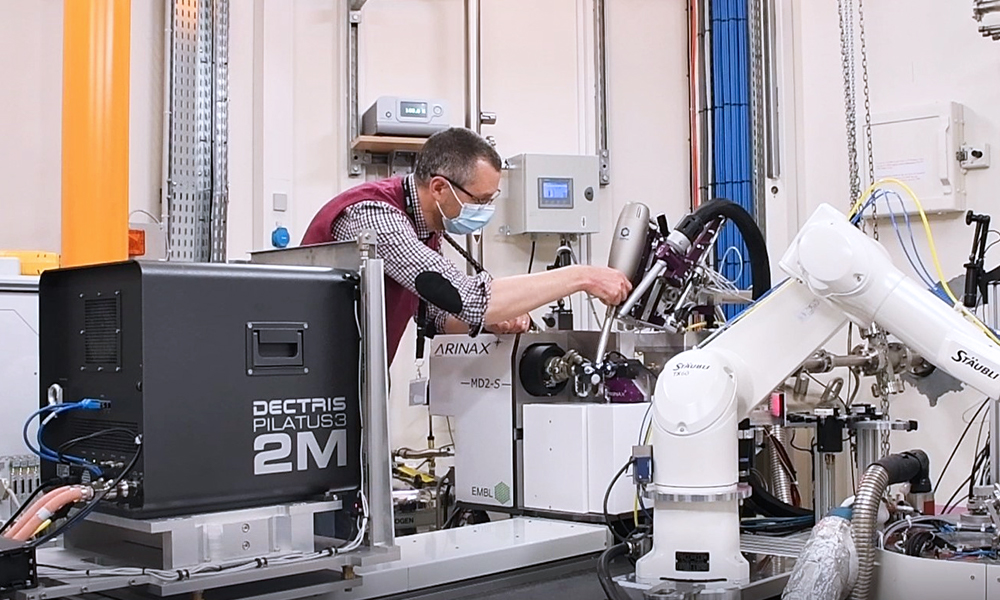
MASSIF-1 beamline in Grenoble supports COVID-19 drug discovery
MASSIF-1, run jointly by EMBL Grenoble and the ESRF, is a beamline for macromolecular crystallography. It is used by the research community to study the 3D structure of proteins, which is important for drug development.

Since the beginning of the COVID-19 pandemic, the research community has made a significant effort to develop vaccines and to identify existing drugs that could slow down infection and death rates. Scientists have looked for new drug targets in efforts to identify suitable treatments.
One of them is Frank Kozielski from University College London, UK. His project focuses on a SARS-CoV-2 protein, NSP10, that is essential for viral replication, and is therefore a potential drug target. After determining the 3D structure of this protein, he had to combine crystals of NSP10 with a large number of distinct small molecules, also known as fragments, in order to find a set of molecules that could potentially inhibit NSP10.
“Due to the importance of the SARS-CoV-2 project, we were under time pressure to actually come up with results quickly and to speed up the process. To do that, we needed access to a fully automated and very reliable macromolecular crystallography beamline such as MASSIF-1,” explains Frank Kozielski.
“With our work we hope to contribute to the worldwide drug discovery efforts to develop drugs against SARS-CoV-2 and maybe other coronavirus related infections in the future,” adds Frank.
EMBL Grenoble offers a range of structural biology services to the research community, including macromolecular crystallography beamlines jointly operated with the ESRF. Among them, MASSIF-1 is unique thanks to its fully automated workflow: from crystal centering to data analysis and structure determination, the steps can be carried out without the user being present.
Find out more about EMBL’s Scientific and Data Services here.


